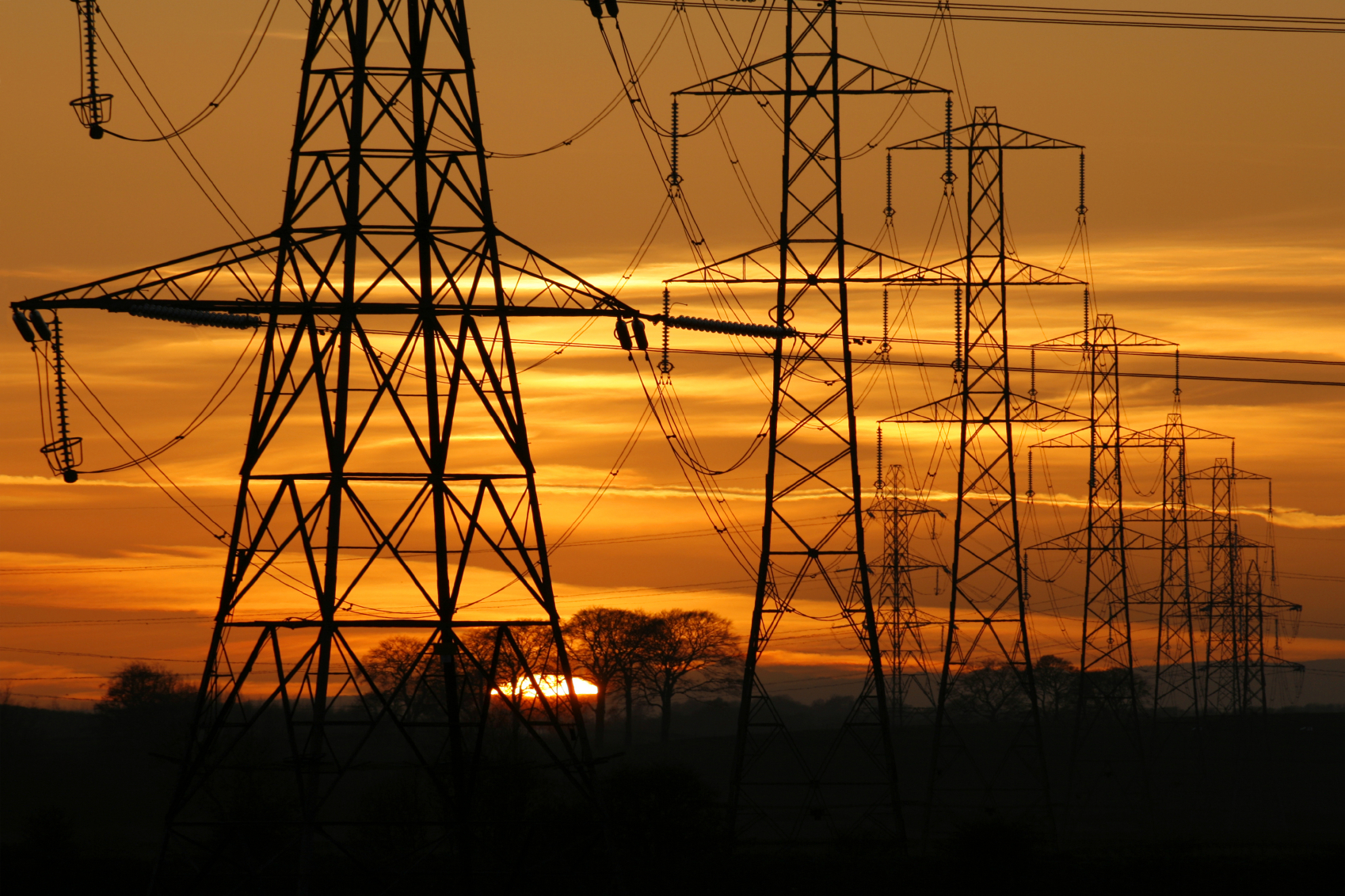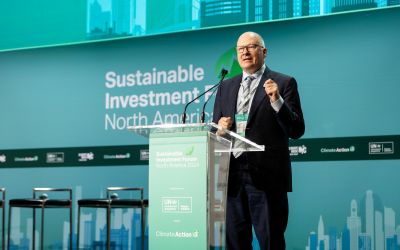The energy sector’s grand transition
Younghoon David Kim, Chair of the World Energy Council, looks at the impact of the Paris Agreement on the energy industry as it charts a path to a sustainable future, and shows the need for energy practitioners to collaborate and innovate with other sectors such as water and food.
The Paris Agreement produced by COP21 coincides with a ‘grand transition’ in the energy sector that reflects broader global trends, ranging from climate change to the so-called Fourth Industrial Revolution, that are fundamentally transforming the economic landscape worldwide.
The implementation of the Paris Agreement will accelerate this transition as it charts a path to a sustainable future. But the challenges ahead should not be underestimated since global economic growth must be aligned with efforts to mitigate environmental damage.
For the energy sector, which will play a vital role in the process, the Paris Agreement is being seen in the context of what the World Energy Council calls the energy ‘trilemma’ – balancing the sometimes conflicting priorities of energy security, access and sustainability.
A new world for energy
There is little doubt that we are witnessing a paradigm shift from a carbon-based economy powered by the combustion of fossil fuels to one based on new sources of energy and new modes of power generation. But this shift will take time. Fossil fuels will continue to play an important role because we cannot meet our pressing energy demands without them.
The Council released at its most recent World Energy Congress, held in Istanbul, Turkey in October 2016, our World Energy Scenarios for 2060, which were prepared in cooperation with Accenture Strategy and Switzerland’s Paul Scherrer Institute.
The study concluded that while the world has seen rapid growth in energy demand since 1970, mainly satisfied by fossil fuels, the future will be different. “Disruptive trends are emerging that will create a fundamentally new world for the energy industry, characterised by lower population growth, radical new technologies, greater environmental challenges, and a shift in economic and geopolitical power,” the report stated.
The report’s principal findings were that:
- Global primary energy demand growth will slow and per capita energy demand will peak before 2030 due to unprecedented efficiencies created by new technologies and more stringent energy policies.
- Demand for electricity will double by 2060. Meeting this demand will mean cleaner energy sources requiring substantial infrastructure investments and systems integration to deliver benefits to all consumers.
- The rise of solar and wind energy will continue at an unprecedented pace that will create both new opportunities and challenges for energy systems.
- Demand peaks for coal and oil have the potential to alter the world from one of ‘stranded assets’ to ‘stranded resources’.
- The diversification of fuels powering transport presents one of the toughest obstacles on the path to decarbonise future energy systems.
- Limiting global warming to no more than a 2 degree C increase, as called for by the Paris Agreement, will require an exceptional and sustained effort far beyond already pledged commitments, and with very high carbon prices.
- Global cooperation, sustainable economic growth and technology innovation are needed to balance the energy ‘trilemma’.
These developments might appear to be encouraging in achieving the goals of the Paris Agreement. But that really depends on what strategies are adopted by the energy sector. The report looked at three divergent paths the world might take.

Three scenarios
Modern Jazz. The first scenario, called Modern Jazz, represents a ‘digitally disrupted’, innovative and market-driven world, with an emphasis on achieving equitable and affordable access to energy. Under this scenario, global energy consumption by 2060 will grow by 38 per cent, while primary energy demand will grow by 25 per cent. Electricity will account for 28 per cent of global energy consumption based on utility-scale low carbon producers, optimised distribution platforms and energy solution integrators. The intermittent renewable resources of solar and wind will account for 30 per cent of power generation, supported by distributed systems, digital technologies and battery innovation. The fossil fuel share of primary energy will fall to 63 per cent, with demand for coal peaking before 2020 and oil by 2030, while the use of LNG and natural gas will continue to rise. Oil will account for 67 per cent of transport fuel, with biofuels accounting for 16 per cent.
Unfinished Symphony, the second scenario, is a world in which more ‘intelligent’ and sustainable economic growth models are adopted to achieve a low carbon future. Under this scenario, energy consumption by 2060 will grow by 22 per cent, while primary energy demand will grow by 10 per cent. Electricity will account for 29 per cent of energy consumption based on highly integrated models and funding mechanisms to allocate the system costs of renewables and avoid cost destruction for energy producers. Solar and wind energy will account for 39 per cent of power generation, with hydro and nuclear capacity serving to balance intermittency. The fossil fuel share will fall to 50 per cent, with a drastic fall in both coal and oil demand, while stringent emissions standards will slow the growth in natural gas use. Oil will account for 60 per cent of transport fuel, with biofuels accounting for 21 per cent.
Hard Rock, the third scenario, represents a world of weaker and unsustainable economic growth with inward-looking policies to ensure energy security. Under this scenario, global energy consumption will grow by 46 per cent, while primary energy demand will grow by 34 per cent. Electricity will account for 25 per cent of energy consumption based on models that work well in local conditions. Even in this scenario, which sees lower infrastructure investment, solar and wind generation will reach 20 per cent of power generation, while hydro will become particularly important in Africa and nuclear in East Asia. The fossil fuel share will fall to 70 per cent, with coal still seen as providing energy security, particularly in India and China, while transport systems based on fossil fuels will continue to dominate. There will also be a growing dependence on unconventional fossil fuels. Oil will still account for 78 per cent of transport fuel, with biofuels accounting for 10 per cent.
Obviously, Unfinished Symphony represents the best-case scenario to achieve the global climate targets as outlined in the Paris Agreement, with the Hard Rock being the worst-case scenario and Modern Jazz falling between the two. Unfinished Symphony would reduce carbon emissions by 61 per cent from 2014 levels by 2060 and Modern Jazz would result in a 28 per cent decline. In contrast, Hard Rock would result in a 5 per cent rise in carbon emissions.
There are several valuable lessons to be drawn in reviewing these three scenarios. The first is the need to develop clean and more efficient ways to produce and use fossil fuels. The second is the need to search for new technologies for alternative energies. The third is the need for greater global cooperation instead of reverting to policies that put the emphasis on national energy security.
Furthermore, the energy industry must look beyond the confines of its own sector to address the world’s rising demand for food and water. The food, energy, and water sectors are becoming more interdependent due to pressures from climate change. Any breakdown in one element of this nexus inevitably impacts negatively on either one or both of the remaining elements. The collapse of the food, energy, water nexus would eventually undermine the very foundations of the global economy.
Innovate or perish
The coming decades will help define the winners and losers of the energy transition. The stark fact is that most, if not all, the key players in the energy sector must innovate or eventually perish.
The choices outlined in the three diverging scenarios are becoming even more pressing in light of the threats from climate change. It is why the global energy sector must fully embrace the spirit of the Paris Agreement as well as the United Nations Sustainable Development Goals 2030 to deliver access to affordable, reliable, and modern energy services.
My personal interest is to focus on creating a new generation of sustainable technology and identifying the right technology for the right place at the right price. For example, there is a great need for a grid-scale energy storage system that can once and for all overcome the conundrum of the intermittency of wind and solar power.
The energy industry must accelerate the pace of innovation by financing promising inventors and commercialising disruptive technologies in the same way that the pioneers of the electricity revolution – Michael Faraday, Nikola Tesla and Thomas Edison – were encouraged in their endeavours. Energy companies are realising that the world is on the cusp of a whole new industrial era, driven by technological advances for smart cities, connected homes and big data. It is also supported by remarkable progress in material science, artificial intelligence and molecular machining, to name just a few.
Companies outside the energy sector, such as Tesla, Uber, and Google, are conducting activities that are already affecting energy demand patterns. Energy companies must match them in undertaking innovation. Utilities, for example, must focus on energy storage, automation and digital communications to improve the efficiency and reliability of electricity grids powered by a growing share of renewable energy sources. Innovation should also extend to frontier technologies such as microbial energy research. As a result, there is a growing need to nurture a whole new generation of energy innovators, inspiring the most brilliant minds to come up with appropriate energy solutions. We must bring them together with forward-looking financiers to help commercialise technological breakthroughs. We must connect the brightest minds with the deepest pockets.
The energy industry has produced a long list of achievements since the invention of the steam engine in the 18th century. It has succeeded so far in providing affordable and widely available energy in many parts of the world. But it must now do more. This new challenge is every bit as ambitious and vital as the commitment made to space exploration since the 1960s, in which the private sector is now assuming a growing role. Energy practitioners must now go beyond their original sector and enhance innovative collaboration among all the relevant stakeholders in the food, energy, and water nexus.
I hope that the Council can play a pivotal role in this process by providing a vision and a roadmap for the sustainability and resilience of the global environment and thus the global economy.
Read the full Climate Action 2016/17 Publication here








